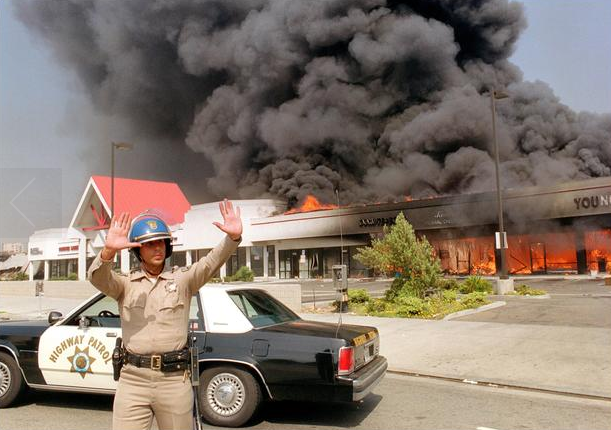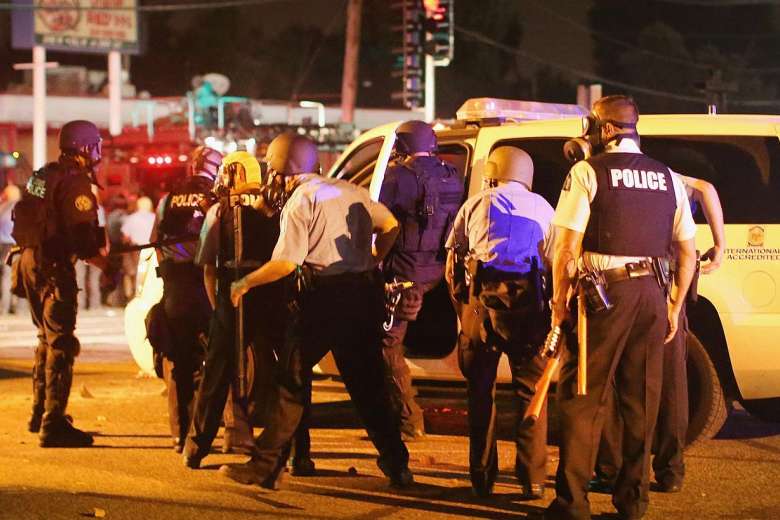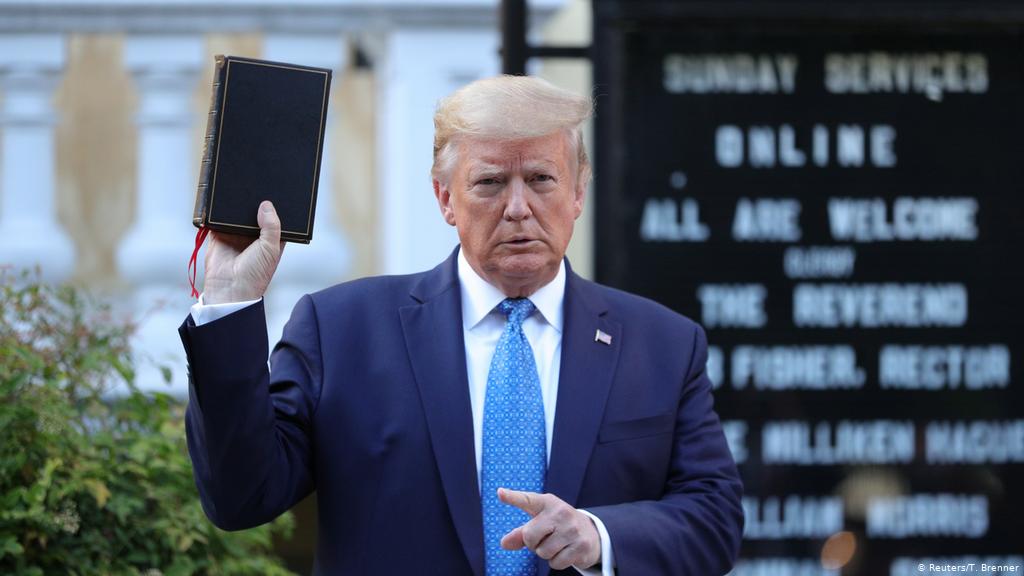George Floyd, the African American who died on May 25 after a Minneapolis police officer knelt on his neck for nearly nine minutes, has become a fresh symbol of police brutality against blacks in the U.S.
Benjamin Crump, the lawyer for the family of Floyd on Thursday said it was "the pandemic of racism and discrimination" that killed Floyd.
Floyd's death has sparked protest nationwide and some has turned violent. The situation is like a déjà vu as the "pandemic of racism" has been rooted in the U.S. society for a long while.
Black deaths caused by police

Protesters march to LAPD headquarters during the National Day of Protest to Stop Police Brutality in Los Angeles, California October 22, 2014. /Reuters
Protesters march to LAPD headquarters during the National Day of Protest to Stop Police Brutality in Los Angeles, California October 22, 2014. /Reuters
About one in every 1,000 black men will be killed by the police in the U.S., a tragedy 2.5 times more likely to happen than to a white man, according to a study published by the National Academy of Science journal in 2019.
"Mapping Police Violence," a research and advocacy group, found that in 2019, 24 percent of killings were of black Americans, despite only making up 13 percent of the U.S. population. Rates in cities like New York and Washington DC, where the black population accounts for nearly 50 percent, even reached 88 percent.
The research also noted that 99 percent of all officers involved in police killing cases were not charged.
Here is a look at some of the major cases from 2014 onward:
- Eric Garner, July 17, 2014
Circumstances:
Eric Garner, a 43-year-old African-American man, died in New York after Daniel Pantaleo, a New York City Police Department (NYPD) officer put him in a choke-hold while arresting him on July 17, 2014. Video footage of the incident showed that Garner repeated the words "I can't breathe" 11 times.
Outcome:
On December 3, 2014, the grand jury decided not to indict Pantaleo on criminal charges, which stirred public protests and rallies. In 2019, the U.S. Department of Justice also declined to file charges. Pantaleo was fired on August 19, 2019 but has since filed a lawsuit to try to get his job back.
- Michael Brown, August 9, 2014
Circumstances:
Michael Brown, an unarmed 18-year-old black man, was shot by 28-year-old white police officer Darren Wilson in Ferguson on August 9, 2014. He was hit with six bullets and died at the scene.
Outcome:
Following the announcement made by the grand jury on November 24, 2014, that Wilson would not be charged, protests, some of them violent, spread across the nation. Wilson resigned in the same month. The U.S. Department of Justice in March 2015 also decided it would not prosecute Wilson.
- Tamir Rice, November 22, 2014
Circumstances:
On November 22, 2014, Tamir Rice, a 12-year-old black boy who was playing with a toy pellet gun in a Cleveland park ,was shot dead by police officer Timothy Loehmann immediately after his arriving on the scene. Loehmann claimed he thought it was a real gun.
Outcome:
In December, 2014, the grand jury decided not to indict Loehmann. Loehmann was fired in 2017 for lying on his job application form.
- Freddie Gray, April 12, 2015
Circumstances:
Charged for possessing a switch blade knife, Freddie Gray, a 25-year-old black man, was arrested by Baltimore Police Department on April 12, 2015. Video recording showed Gray screaming in pain when being dragged by police officers to a police van. His spinal cord was almost severed, he fell into a coma in the van, and died a week later.
Outcome:
Protests broke out in response to Gray's death and some turned violent. Although State's Attorney Marilyn Mosby on May 1, 2015 announced criminal charges against six police officers involved in the incident, these charges later ended in either acquittals or dropped. The U.S. Department of Justice in September, 2017 decided not to file criminal civil rights charges against the six police officers.
- Alton Sterling, July 5, 2016
Circumstances:
Alton Sterling, a 37-year-old black man, was shot dead at close range by two white Baton Rouge Police Department officers Blane Salamoni and Howie Lake II on July 5, 2016. Police shot Sterling six times saying they thought Sterling was reaching for a gun in his pocket but the video footage does not show him drawing it.
Outcome:
The two officers did not face criminal charges. Salamoni was fired for violating use-of-force policies in March 2018, and Lake was suspended for three days for losing his temper.
- Philando Castile, July 6, 2016
Circumstances:
African-American Philando Castile, 32, was killed while out driving with his girlfriend in St Paul, Minnesota. He was pulled over, and shot as he was reaching for his license, according to his girlfriend. Hispanic-American police officer Jeronimo Yanez who shot Castile seven times claimed he feared Castile was reaching for his gun.
Outcome:
Yanez was charged of one count of second-degree manslaughter and two counts of intentional discharge of a firearm, but he was acquitted of all charges in June, 2017. He was fired after the trial.
- Stephon Clark, March 18, 2018
Circumstances:
The 22-year-old black American man Stephon Clark died after being shot at least seven times by two police officers in the backyard of his grandmother's house in Sacramento, California. Police officer Terrence Mercadal and Jared Robinet said Clark has pointed a gun at them but investigation showed Clark was just holding a cellphone.
Outcome:
The district attorney in March, 2019 announced the two police officers would not be charged, arguing their use of force had been justified.
How past U.S. presidents handle police brutality in protests?
Looting, violence, confrontation with police who used tear gas, similar tense protests against police brutality and racism have taken place in U.S. before. The rioting in 1992 and 2014 are the most typical cases.
- 1992 Los Angeles riots

A California Highway patrolman directs traffic around a shopping center engulfed in flames during the 1992 Los Angeles riots. /AFP
A California Highway patrolman directs traffic around a shopping center engulfed in flames during the 1992 Los Angeles riots. /AFP
The unrest began on April 29, 1992 after a jury acquitted four white officers of the Los Angeles Police Department (LAPD), who were filmed brutally beating up black motorist Rodney King.
This was during George Herbert Walker Bush's administration. Bush said he was too stunned at the verdict but denounced the rioters who took to the streets and called for "respect for the law."
"What you saw and what I saw on the TV video was revolting. I felt anger. I felt pain. I thought, 'How can I explain this to my grandchildren?' Civil rights leaders and just plain citizens fearful of and sometimes victimized by police brutality were deeply hurt. And I know good and decent policemen who were equally appalled," Bush said in an Oval Office address responding to the protests.
He added: "The wanton destruction of life and property is not a legitimate expression of outrage with injustice. It is itself injustice. And no rationalization, no matter how heartfelt, no matter how eloquent, can make it otherwise."
The riots only ended after California Army National Guard, the United States military, and several federal law enforcement agencies were deployed to assist local authorities.
In 1993, two of the four officers were convicted in a civil suit and both served 30 months in prison. The other two officers were both fired by the LAPD.
- Ferguson protests

Police take cover after gunshots ring out during a demonstration to protest the killing of teenager Michael Brown turned violent on August 17, 2014. /AFP
Police take cover after gunshots ring out during a demonstration to protest the killing of teenager Michael Brown turned violent on August 17, 2014. /AFP
Ferguson protests are a series of peaceful protests and several riots triggered by Brown's death. The unrest reached a breaking point in November, 2014 following the announcement of non-prosecution decision by the grand jury.
In response to the grand jury's decision, then President Barack Obama in an address noted "We need to recognize that this is not just an issue for Ferguson. This is an issue for America. We have made enormous progress in race relations over the course of the past several decades. I've witnessed that in my own life. And to deny that progress I think is to deny America's capacity for change."
The protests were brought to a stop after Missouri Governor Jay Nixon deployed the National Guard in the area.
Obama's administration in December, 2014 created a commission to make recommendations for broad police reform in the U.S. and seek to combat excessive use of force by the police.
The recommendation calls for "external and independent criminal investigations in cases of police use of force resulting in death, officer-involved shootings resulting in injury or death, or in-custody deaths."
For Floyd's death, Trump didn't make major comments until May 28 when he tweeted," At my request, the FBI and the Department of Justice are already well into an investigation as to the very sad and tragic death in Minnesota of George Floyd."
When protests intensified in Minneapolis at night of May 29, in a post that Twitter has since hidden and labeled as in violation of the platform's rules about glorifying violence, Trump called protesters as "thugs" and drew a quote from a former Miami police chief, "when the looting starts, the shooting starts."
He was busy with attacks on China including stripping Hong Kong's special privileges with the U.S, and cutting ties with the World Health Organization and mentioned nothing on Floyd's death on May 30's press conference in the White House Rose Garden although reporters kept shouting questions about Floyd and Minnesota.
In following days, Trump pledged a crackdown on the protests, and blamed extreme left and media outlets for intensifying the protests.

U.S. President Donald Trump holds up a Bible as he stands in front of St. John's Episcopal Church across from the White House at the White House in Washington, U.S., June 1, 2020. /Reuters
U.S. President Donald Trump holds up a Bible as he stands in front of St. John's Episcopal Church across from the White House at the White House in Washington, U.S., June 1, 2020. /Reuters
Four polls from CBS News, Emerson College, Reuters/Ipsos and Monmouth University released this week all showed that Americans are unhappy with Trump's response to Floyd's death.
Experts also said Trump is emboldening police after taking office as he dismantled the already limited federal checks on abusive police departments and ended Obama era's reform attempts.
He also signed an executive order once again allowing police easy access to military equipment.
Meanwhile, Trump's comments on people who are not white have always been controversial. As early as in his election campaign, he famously disparaged Mexican immigrants as "criminals and rapists."
He has called African, Caribbean, and Central American nations "shitholes". For similar cases like Floyd, he rarely commented. Even when Clark's case in 2018 was heavily publicized, Trump still kept silence.